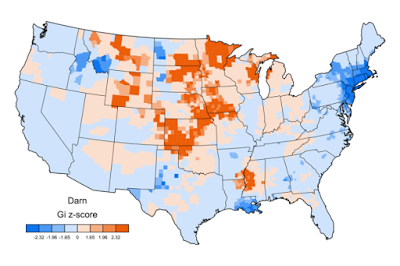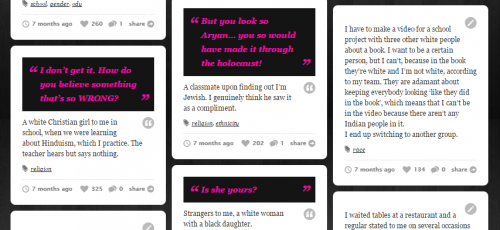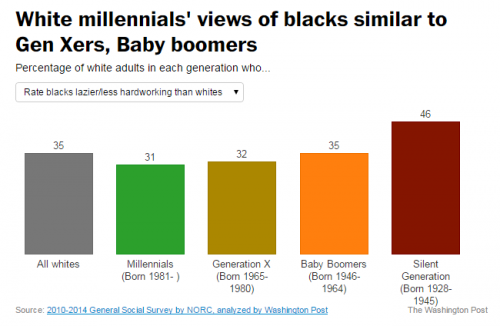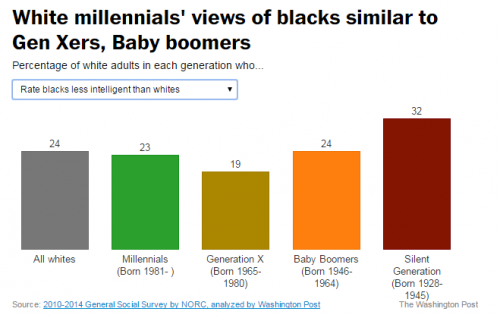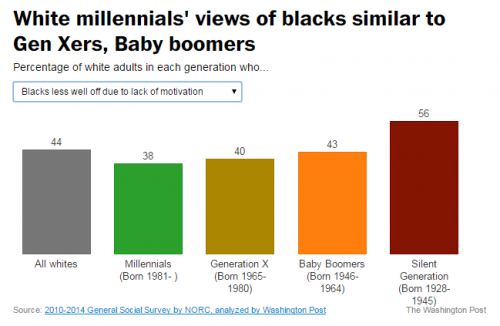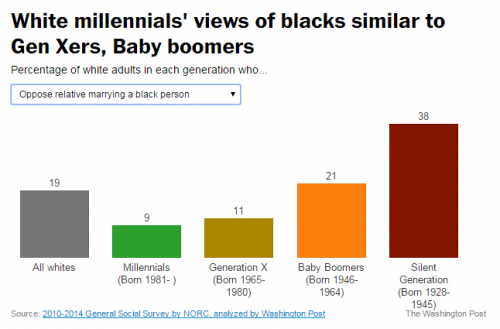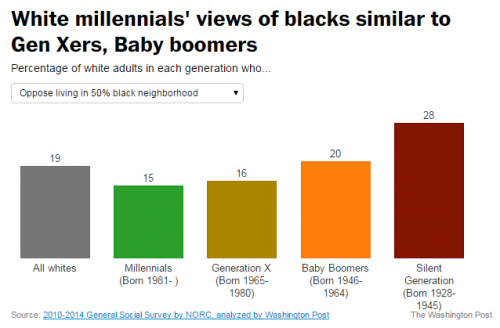Despite popular notions that the U.S. is now “post-racial,” numerous recent events (such as the Rachel Dolezal kerfuffle and the Emmanuel AME Church shooting) have clearly showcased how race and racism continue to play a central role in the functioning of contemporary American society. But why is it that public rhetoric is at such odds with social reality?
A qualitative study by sociologists Natasha Warikoo and Janine de Novais provides insights. By conducting interviews with 47 white students at two elite universities, they explore the “lenses through which individuals understand the role of race in society.” Described as race frames, Warikoo and de Novais articulate two ways in which their respondents rely on particular cultural frames in making sense of race and race relations.
- The color-blind frame: the U.S. is now a “post-racial” society where race has little social meaning or consequence.
- The diversity frame: race is a “positive cultural identity” and the incorporation of a multitude of perspectives (also referred to as multiculturalism) is beneficial to all those involved.
Integral to Warikoo and de Novais’ study is the finding that about half of their student respondents simultaneously house both the color-blind and diversity frames. Of 24 students who held a color-blind frame, 23 also promoted a diversity frame. Warikoo and de Novais explain this discursive discordance as a product of the environments in which respondents reside: a pre-college environment where race is typically de-emphasized and a college environment that amplifies the importance of diversity and multiculturalism.
Importantly, Warikoo and de Novais argue that the salience of these two co-occurring race frames is significant not only because of their seeming contradictions, but because they share conceptions of race that largely ignore a structural frame: the idea that social structures are an important source of racism and racial inequality in the U.S. Ultimately, Warikoo and de Novais’ findings illustrate the general ambivalence that their white respondents share about race and race-based issues — undoubtedly reflective of the discrepancies concerning race in broader society.
Cross-posted at Discoveries.
Stephen Suh is a PhD candidate in Sociology at the University of Minnesota and a graduate board member at The Society Pages. His dissertation research examines the growing global trend of ethnic return migration through the perspectives of Korean Americans.







